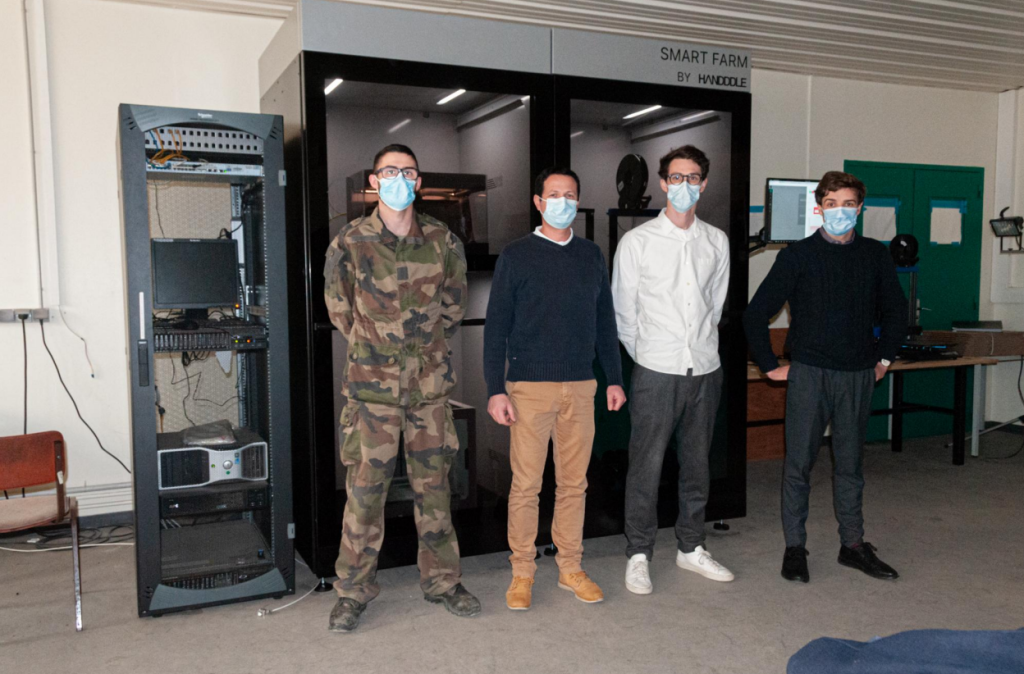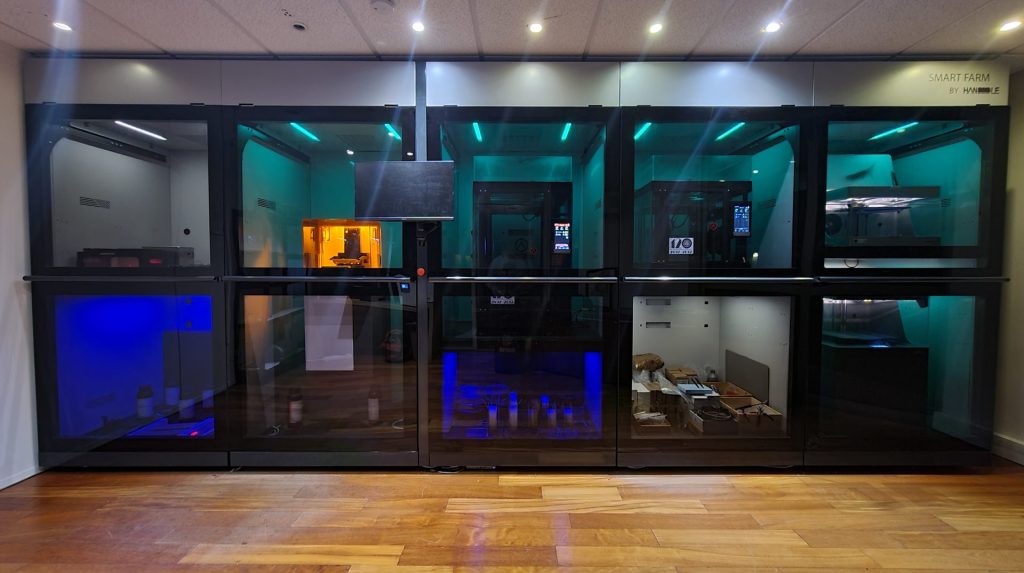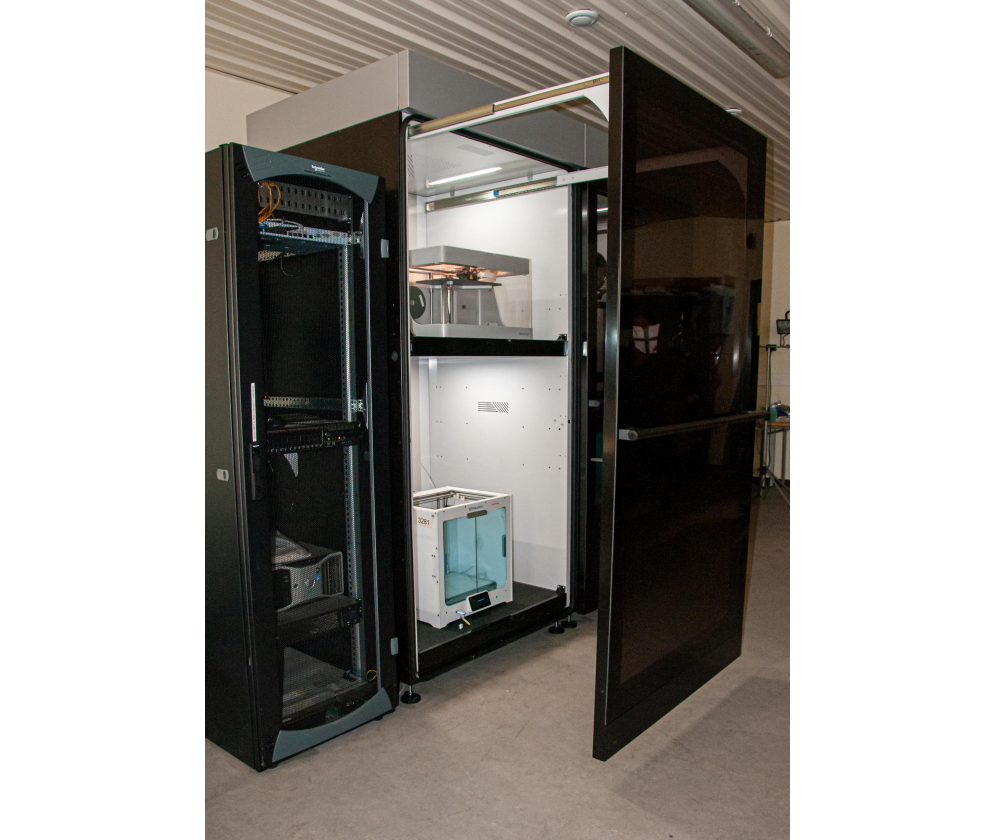Handddle, a France-based 2020 startup specializing in 3D printing production lines, has equipped the French Air and Space Force with a new 3D printing microfactory.
Located in the I3D Workshop at Air Force base 204, the Smart Farm comprises several desktop FFF 3D printers from OEMs such as Markforged and Ultimaker. Engineers at the base will use the new print farm to bring small part fabrication in-house, enabling rapid turnaround for everything from functional prototyping to spare part production and low-volume batch production.
The installation is Handddle’s first collaboration with the defense sector, marking the firm’s entry into a new strategic market.
Handddle writes, “The first phase has been launched. The objective of the French Air and Space Force is to ensure the applicability of the solution for deployment on Air Force bases across France. The French Air and Space Force is also planning to use the Smart Farm for external operations close to the users and their needs.”

Additive manufacturing at the I3D Workshop
Situated in Mérignac, France, the Air and Space Force’s I3D Workshop has been up and running for over a year. The facility is dedicated to 3D printing and allows the armed force to produce complex and confidential parts away from prying eyes.
The I3D Workshop also contributes to supply chain resilience out in the field, where troops and other personnel may require components with rapid lead times. Ultimately, the lab serves as a one-stop-shop for defense parts that must be fabricated under strict production conditions, addressing certification requirements.
Unfortunately, engineers at the lab often run into environmental issues that make it impossible to qualify the 3D printing process, which poses problems for high-performance parts.
The Air Force’s Innovation Management Office explains, “We have encountered a problem of rising humidity in the I3D Workshop since the beginning of autumn and this immediately stopped the production of TPU parts, which are particularly sensitive to humidity. Also, temperature disparities cause warping phenomena.”
In a bid to address these issues, Handddle offered to deploy its own 3D printing production line at the I3D Workshop.

A Smart Farm makeover
The new Smart Farm is designed to help the Air and Space Force maintain security and control over its production process, replacing the old additive manufacturing lab. It contains two modules: a production environment for the 3D printers and a storage environment for the filaments.
As well as providing optimal printing conditions for the machines, the Smart Farm also secures the workspace for operators with an autonomous filtering system that catches harmful emissions such as VOCs.
Handddle’s microfactory comes complete with a software application that enables full control over the printer fleet in real-time, while also offering resource management capabilities for traceability. The Smart Farm is also ISO 9001 certified.
If successful at the I3D Workshop, the Air and Space Force will also deploy the 3D printing production line at more of its bases across France.

Additive manufacturing in the armed forces is no new venture, and the list of applications goes beyond just prototyping and spare part production. Just recently, the University of Maine (UMaine) 3D printed two new large-scale boats for the US Marine Corps at its Advanced Structures and Composites Center in Orono, one of which is reportedly the largest vessel ever to be additively manufactured. The prototype boats are designed to be logistical support vessels and will be tested for field use in the coming months.
Elsewhere, the Defense Advanced Research Projects Agency (DARPA) recently issued a Small Business Innovation Research (SBIR) opportunity inviting proposals for a new edible 3D printing material. The concept call aims to attract clever ideas for turning biomass into safe and edible food products designed to be 3D printed on the front lines and other disaster zones.
Subscribe to the 3D Printing Industry newsletter for the latest news in additive manufacturing. You can also stay connected by following us on Twitter, liking us on Facebook, and tuning into the 3D Printing Industry YouTube Channel.
Looking for a career in additive manufacturing? Visit 3D Printing Jobs for a selection of roles in the industry.
Featured image shows the Smart Farm at the I3D Workshop. Photo via Handddle.



